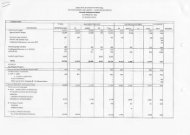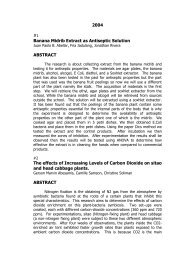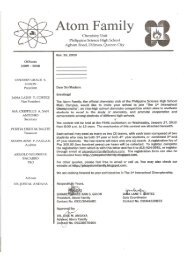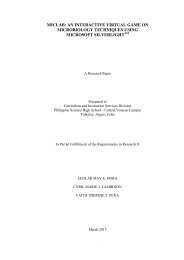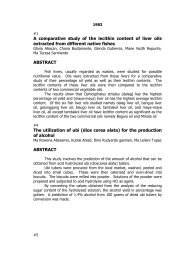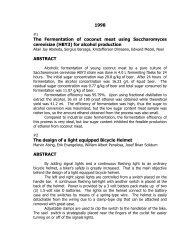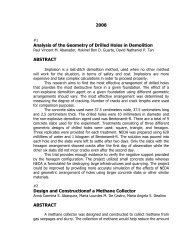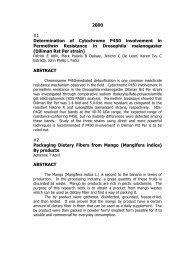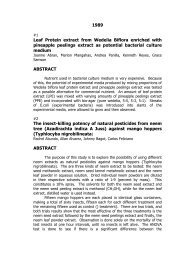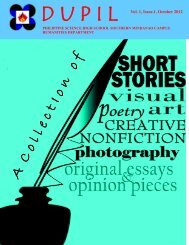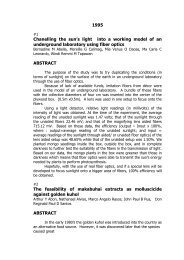A comparative study of paper produced from zea mays - Philippine ...
A comparative study of paper produced from zea mays - Philippine ...
A comparative study of paper produced from zea mays - Philippine ...
You also want an ePaper? Increase the reach of your titles
YUMPU automatically turns print PDFs into web optimized ePapers that Google loves.
#16<br />
The protein content and the potential antagonistic<br />
property <strong>of</strong> alphitobius laevegatus (black fungus bettle)<br />
Melflor Atienza, Levi Fernadez, Corazon de Ungria, Lemuel De Velez, Monica<br />
Xavier<br />
ABSTRACT<br />
The objective <strong>of</strong> the <strong>study</strong> are to find the protein content and to<br />
determine the antagonistic property <strong>of</strong> alphitobius laevegatus (black fungus<br />
beetle). The Kjeldahl method for quantitative protein analysis showed that<br />
the beetle contains 14% protein. This is comparable to the protein found in<br />
locust (13.7), squid (14%), and pork liver (19.7%).<br />
To test the antagonistic (dilating) property <strong>of</strong> A laevegatus, an isolated<br />
tissue experiment using the tracheal muscle <strong>of</strong> the cat was performed.<br />
Acetylcholine was used as the contracting agent and atropine and epinephrine<br />
as the control antagonists (dilators). When the beetle extract was added, no<br />
visible antagonistic effect was observed.<br />
#17<br />
Feasibility <strong>study</strong> <strong>of</strong> using pineapple (Ananas comosus<br />
Merr.) peelings as pulp for <strong>paper</strong>making<br />
Roelito A Begnotea, Ariel M Borja, Glenn Y Guevarra, Jansen S Lorena<br />
ABSTRACT<br />
The peelings was subjected to drying (preferably oven drying). The<br />
initial weight <strong>of</strong> the samples was 1 kg. And was reduced to 600 grams after<br />
oven drying. The samples were cooked in caustic soda or sodium hydroxide<br />
following the soda process <strong>of</strong> pulping. The pulp was bleached using the C-E-<br />
H process. The sheets were formed by molding the pulp in silkscreen.<br />
The outcome <strong>of</strong> the experiment is a yellowish <strong>paper</strong> with a bursting<br />
strength <strong>of</strong> 6.47; tearing strength <strong>of</strong> 16.89; breathing length <strong>of</strong> 3720.72;<br />
double folds <strong>of</strong> 1.0; tensile strength <strong>of</strong> 8.5. The density was calculated to be<br />
0.82 and the weight to be 3.70.<br />
The <strong>paper</strong> was confirm to be an ideal material for use as Bristol and<br />
<strong>paper</strong>board.



